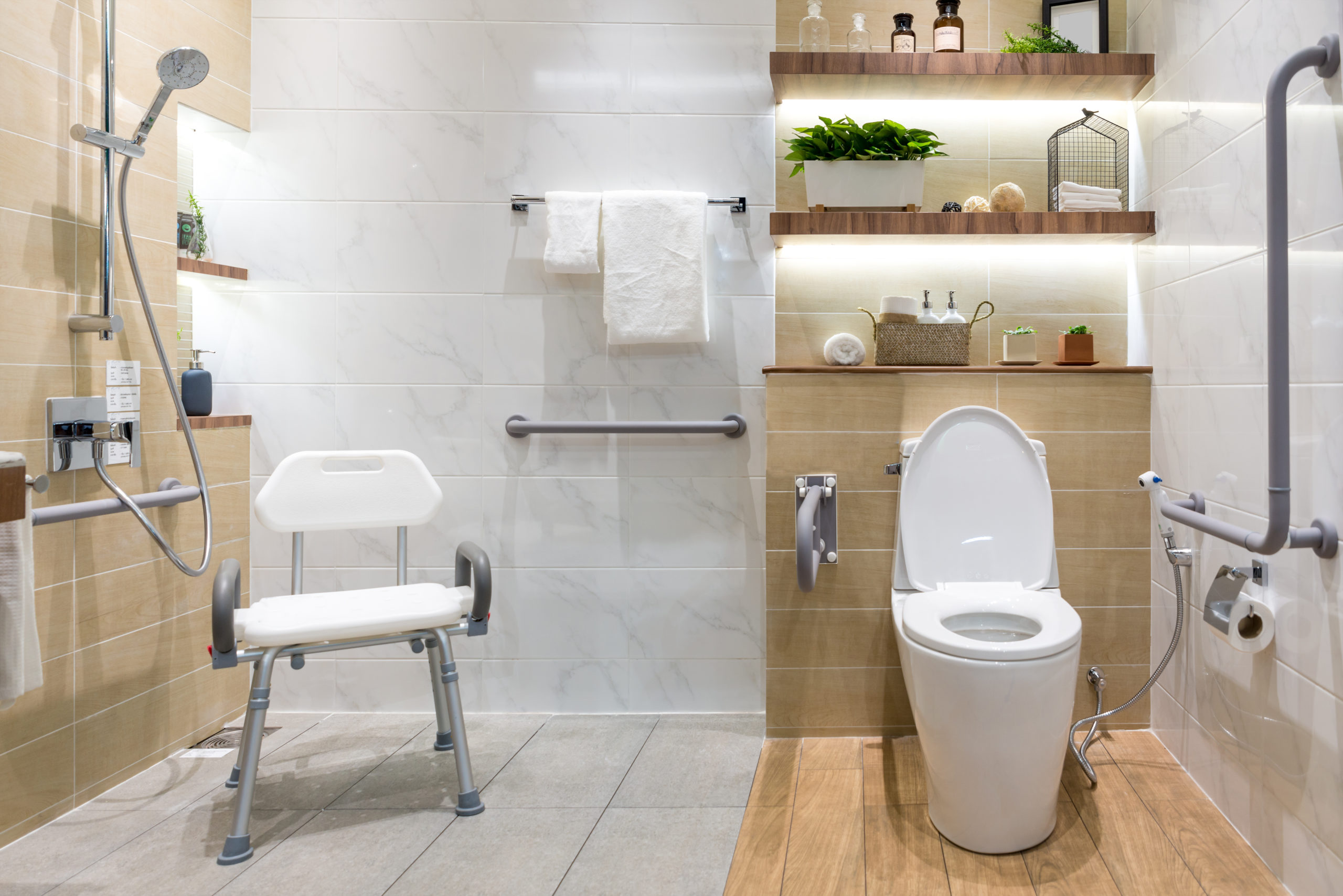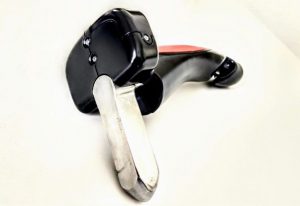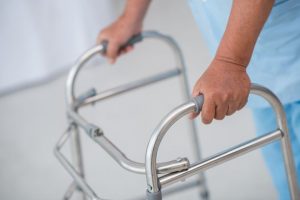Table of Contents
If you’ve ever experienced an illness or had to go through surgery then you know how important assistive devices are in helping you meet your functional goals. Sometimes, it can be difficult to sort through all the different types of assistive devices on your own.
Trust me…I witness the overwhelming look on my patient’s faces each and every day, especially when it comes to ordering equipment.
This is why I hope to give you an overview of the many different types of assistive devices that can be used to help you with your overall journey to recovery.
Property of rehaballey.com
There are many different types of assistive devices. Some assistive devices help with mobility such as walking, climbing stairs, getting in and out of bed, and with transfers; other devices help with activities of daily living such as getting dressed, combing your hair, brushing your teeth, and eating.
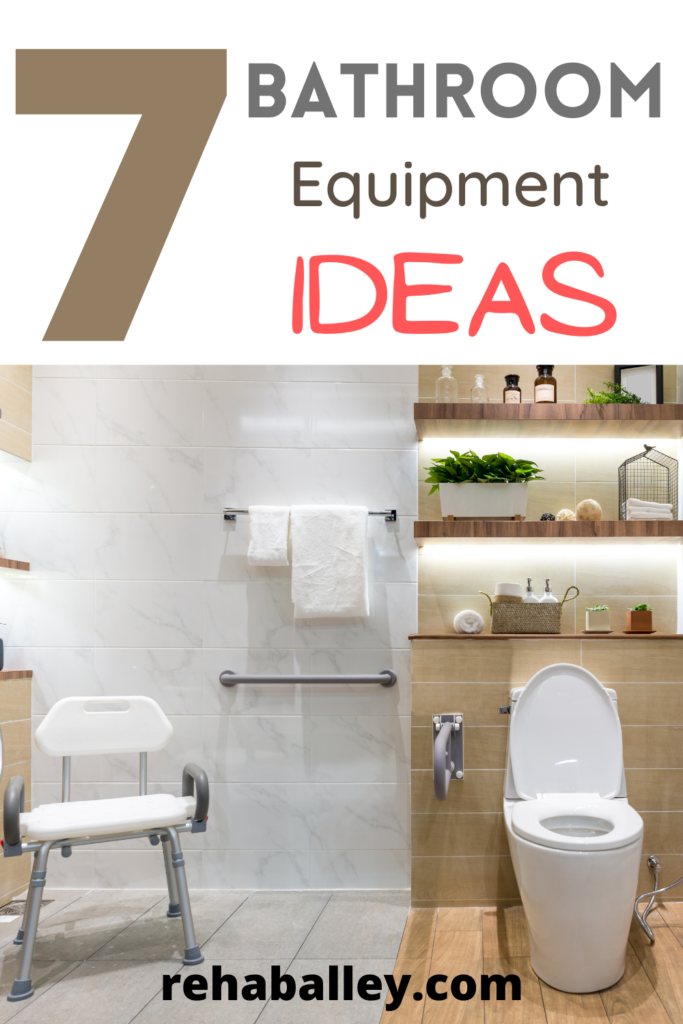
In this particular blog, I will be discussing 7 different types of assistive devices that can be used to assist you in the bathroom.
As mentioned in my blog titled Falls in the Elderly Risk Factors and Preventions, most falls occur while individuals are in the bathroom, which is why it is so important to have the appropriate bathroom equipment. So without further ado, let’s dive into my top 7 bathroom assistive devices.
#1. Transfer-Tub Bench (LINK)
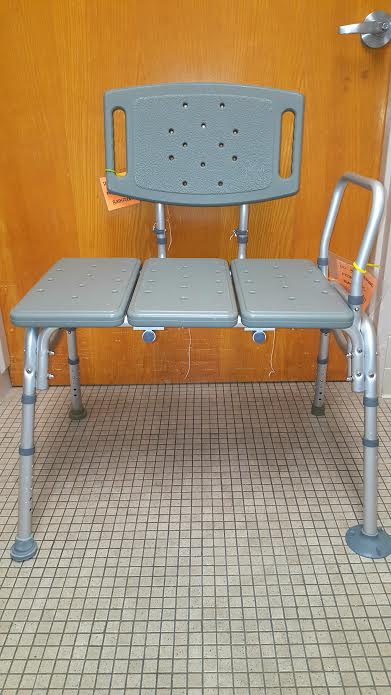
The transfer-tub bench also allows you to be able to sit for the duration of your shower, and can even be adjusted to fit on the right or left side of the shower. Most transfer-tub benches also come with a handlebar that can assist you if you need to stand.
Since you will be mostly sitting in the shower, it is recommended that you have a handheld shower as well. The handheld shower will also be discussed in the sections below.
One of the most popular bathroom equipment devices is a transfer-tub bench. A transfer-tub bench is designed for those who have a tub shower combo.
This transfer device has an extension that hangs over the edge of the tub that allows you to be able to sit and slide inside of the bathtub, instead of having to step over the bathtub.
This device is perfect for those who have difficulty with their standing balance, those who are at high risk for falling, those who have weight-bearing restrictions (LINK), those who have dizziness and/or vertigo, those with recent surgery, and those who have poor endurance and difficulty standing for long periods of time.
#2. Shower Chair (LINK)
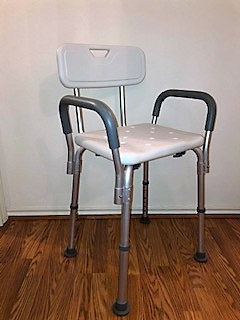
Like the transfer-tub bench, a shower chair is also a bathroom assistive device that can be used in the shower. The primary difference is that a shower chair is used for those who have a stand-up shower instead of a tub shower.
Like the transfer-tub bench, a shower chair can also be used for just about anyone and is highly recommended for individuals with poor endurance, and individuals who are at high risk for falling.
One of the advantages of a shower chair is that it is lightweight and easy to assemble. I recommend shower chairs with bilateral handlebars that can assist you if you need to stand.
As mentioned above, since you will be sitting most of the time, it is recommended that you also use a handheld shower to assist you when bathing.
#3. Grab Bars (LINK)
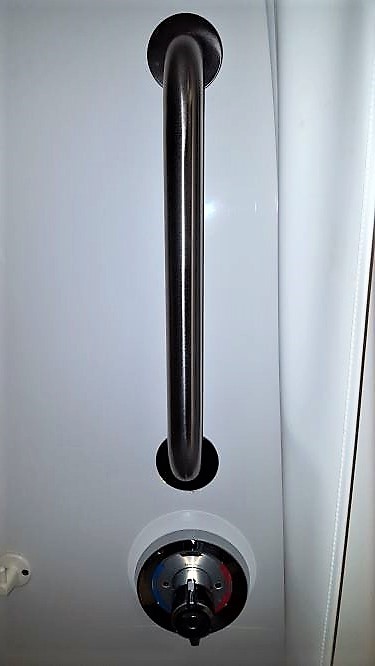
Grab bars are very convenient in the bathtub, shower, or near the toilet and are used to assist with standing balance and support when transitioning from a seated to a standing position. Grab bars also help to reduce falls while in the shower.
There are many different types of grab bars including grab bars with a suction cup, and grab bars that are mounted to the wall.
It is highly recommended that you purchase grab bars that are mounted to the wall by screws instead of a suction cup. Although they are more expensive and more difficult to mount, these grab bars are more reliable, more sturdy, and are less likely to dismount or disassemble.
Property of rehaballey.com
Grab bars have become highly recommended among healthcare professionals, particularly for the elderly population.
In addition, grab bars must be installed in all bathing facilities as required by the ADA (Americans with Disabilities Act).
When purchasing and mounting your grab bars, it is important to remember the ADA requirements to ensure proper use and safety.
Please refer to ada.gov (LINK) and search bathroom grab bars for additional information.
#4. 3-in-1 Commode (LINK)
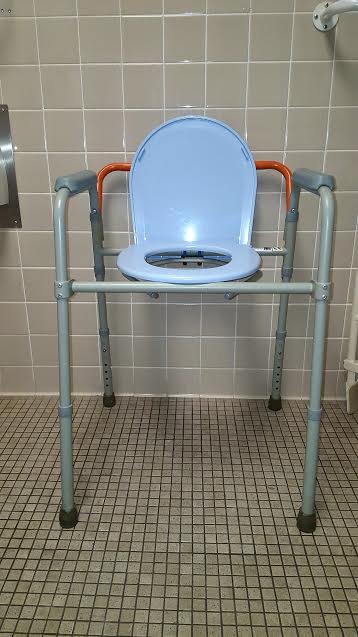
One of the most recommended bathroom devices is a 3-in1-commode. I typically recommend this device for people post-surgery who are unable to sit on a standard (low) toilet seat.
I also recommend a 3-in1-commode for individuals who are unable to walk long distances, either due to weakness, poor cardiovascular endurance, or decreased balance.
This device is also good for individuals who are incontinent, or who are unable to make it to the bathroom in time before soiling their clothing. A 3-in-1 commode is a portable toilet seat that comes with a bucket.
This device can either be placed beside the bed for a quick transfer to the toilet or can be placed directly over a standard toilet to be used as an elevated toilet seat.
Property of rehaballey.com
The bottom bucket can easily be removed for use over a standard toilet, or left in place to be used by the bed or other desired location.
Bedside commodes also come in a standard size (typically for people 250 lbs or less), or a bariatric size (for people over 250 lbs).
These devices also can either come with fixed handles on the sides, or removal handles for individuals who use a sliding board or are unable to come to a full standing position.
#5. Raised Toilet Seat (LINK)
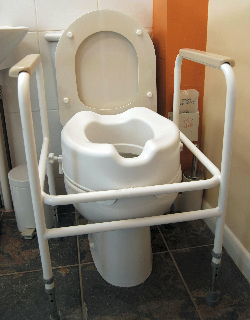
A raised toilet seat, as compared to a bedside commode, goes directly on top of the toilet rim for the sole purpose of raising the overall height of the toilet seat.
Most raised toilet seats are designed to attach to the rim of the toilet and can be easily assembled by simply lifting the toilet seat.
Other raised toilet seats are a little more tedious to assemble and may take removing the toilet seat altogether. I recommend purchasing a raised toilet seat with handles to assist with transfers on and off of the toilet.
Property of rehaballey.com
Raised toilet seats are perfect for individuals who have difficulty standing from a low surface, or individuals who have certain precautions, such as total hip surgery, that inhibits them from sitting on low surfaces.
Some important things to remember are that raised toilet seats are designed to attach to toilet rims only, and can not be used over a bedside commode.
Another important thing to remember is that raised toilet seats typically fit over standard toilets, and may not be able to be used over elongated toilet bowl rims.
#6. Hand Held Shower (LINK)
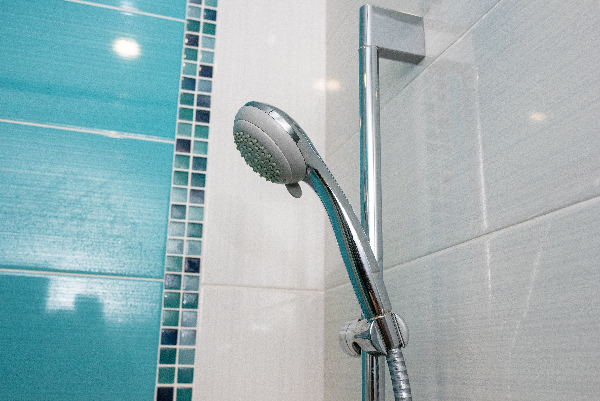
A handheld shower is a device by which the showerhead can be removed from its base, and used in various positions.
One of the advantages of a handheld shower is that it can be used closer to the body, and is more convenient for hard-to-reach places, especially in the elderly who have difficulty bending over or standing for long periods of time.
As mentioned previously, handheld showers are recommended for individuals who are using a transfer-tub bench or shower chair.
Hand-held showers do come with an installation guide, please refer to the installation guide on how to assemble your hand-held shower correctly.
#7. Long-handled Bath Sponge (LINK)
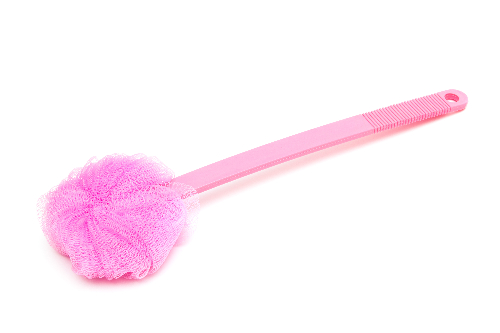
Lastly, a long-handled bath sponge can also be used as an extra lever for those hard-to-reach places such as the back and the feet.
Like the handheld shower, this device can be used for the elderly or persons with a disability who are unable to bend over due to poor standing balance, and/or decreased flexibility. T
he long-handled bath sponge is the least expensive device and does not require any assembly.
**ALLEY TIPS: Although bathroom devices can significantly reduce the risk of accidents and falls, there is still a risk that falls can occur. For those individuals who are at high risk for falling, and who live alone, I recommend a fall alert device such as MobileHelp.
MobileHelp provides a pendant that can be worn around the neck and alerts emergency support with just 1 click of a button. Not to mention, it is water-proof and can be safely worn in the bathtub or shower**
Property of rehaballey.com
Those are the top 7 bathroom devices that I recommend for the elderly, or for individuals who are recovering from surgery or severe illness.
Feel free to click on each link for more details on the prices of each bathroom equipment, as well as how to order.
It is important to note that most insurance companies do not cover the cost of bathroom assistive devices in your plan.
Therefore, it is important to do your research and know your options before making any final purchases. Hopefully, this article helps to clarify some questions you may have regarding the uses and types of bathroom equipment.
Feel free to fill in my contact form, or email me at crumphs@rehaballey.com if you have any further questions. GOD BLESS YOUR ENDEAVORS!!

